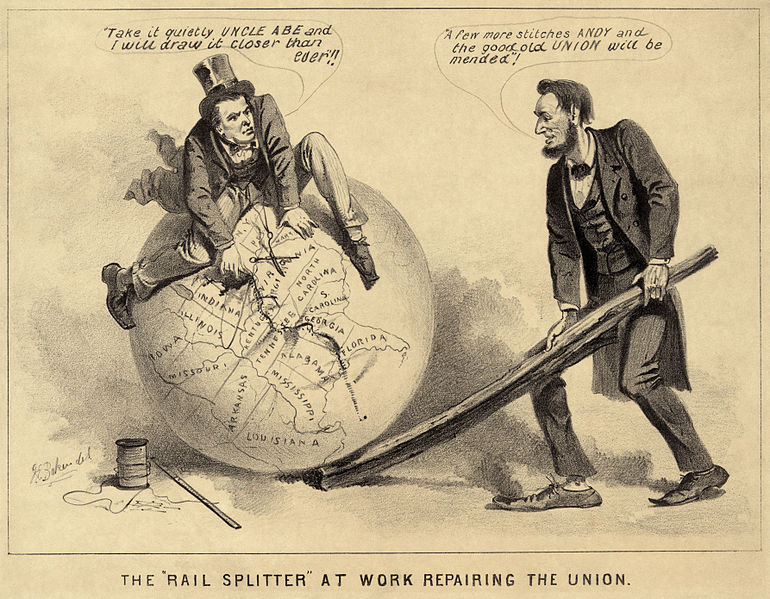Authors:
Historic Era:
Historic Theme:
Subject:
October/November 1983 | Volume 34, Issue 6


Authors:
Historic Era:
Historic Theme:
Subject:
October/November 1983 | Volume 34, Issue 6

IN THE PAST twenty years, no period of American history has been the subject of a more thoroughgoing réévaluation than Reconstruction—the violent, dramatic, and still controversial era following the Civil War. Race relations, politics, social life, and economic change during Reconstruction have all been reinterpreted in the light of changed attitudes toward the place of blacks within American society. If historians have not yet forged a fully satisfying portrait of Reconstruction as a whole, the traditional interpretation that dominated historical writing for much of this century has irrevocably been laid to rest.
Anyone who attended high school before 1960 learned that Reconstruction was an era of unrelieved sordidness in American political and social life. The martyred Lincoln, according to this view, had planned a quick and painless readmission of the Southern states as equal members of the national family. President Andrew Johnson, his successor, attempted to carry out Lincoln’s policies but was foiled by the Radical Republicans (also known as Vindictives or Jacobins). Motivated by an irrational hatred of Rebels or by ties with Northern capitalists out to plunder the South, the Radicals swept aside Johnson’s lenient program and fastened black supremacy upon the defeated Confederacy. An orgy of corruption followed, presided over by unscrupulous carpetbaggers (Northerners who ventured south to reap the spoils of office), traitorous scalawags (Southern whites who cooperated with the new governments for personal gain), and the ignorant and childlike freedmen, who were incapable of properly exercising the political power that had been thrust upon them. After much needless suffering, the white community of the South banded together to overthrow these “black” governments and restore home rule (their euphemism for white supremacy). All told, Reconstruction was just about the darkest page in the American saga.
Originating in anti-Reconstruction propaganda of Southern Democrats during the 187Os, this traditional interpretation achieved scholarly legitimacy around the turn of the century through the work of William Dunning and his students at Columbia University. It reached the larger public through films like Birth of a Nation and Gone With the Wind and that best-selling work of myth-making masquerading as history, The Tragic Era by Claude G. Bowers. In language as exaggerated as it was colorful, Bowers told how Andrew Johnson “fought the bravest battle for constitutional liberty and for the preservation of our institutions ever waged by an Executive” but was overwhelmed by the “poisonous propaganda” of the Radicals. Southern whites, as a result, “literally were put to the torture” by “emissaries of hate” who manipulated the “simple-minded” freedmen, “inflaming the negroes’ egotism” and even inspiring “lustful assaults” by blacks upon white womanhood.
In a discipline that sometimes seems to pride itself on the rapid rise and fall of historical interpretations, this traditional portrait of Reconstruction enjoyed remarkable staying power. The long reign of the old interpretation is not difficult to explain. It presented a set of easily identifiable heroes and villains. It enjoyed the imprimatur of the nation’s leading scholars. And it accorded with the political and social realities of the first half of this century. This image of Reconstruction helped freeze the mind of the white South in unalterable opposition to any movement for breaching the ascendancy of the Democratic party, eliminating segregation, or readmitting disfranchised blacks to the vote.
NEVERTHELESS , THE demise of the traditional interpretation was inevitable, for it ignored the testimony of the central participant in the drama of Reconstruction—the black freedman. Furthermore, it was grounded in the conviction that blacks were unfit to share in political power. As Dunning’s Columbia colleague John W. Burgess put it, “A black skin means membership in a race of men which has never of itself succeeded in subjecting passion to reason, has never, therefore, created any civilization of any kind.” Once objective scholarship and modern experience rendered that assumption untenable, the entire edifice was bound to fall.
The work of “revising” the history of Reconstruction began with the writings of a handful of survivors of the era, such as John R. Lynch, who had served as a black congressman from Mississippi after the Civil War. In the 1930s white scholars like Francis Simkins and Robert Woody carried the task forward. Then, in 1935, the black historian and activist W. E. B. Du Bois produced Black Reconstruction in America , a monumental réévaluation that closed with an irrefutable indictment of a historical profession that had sacrificed scholarly objectivity on the altar of racial bias. “One fact and one alone,” he wrote, “explains the attitude of most recent writers toward Reconstruction; they cannot conceive of Negroes as men.” Du Bois’s work, however, was ignored by most historians.
It was not until the 1960s that the full force of the revisionist wave broke over the field. Then, in rapid succession, virtually every assumption of the traditional viewpoint was systematically dismantled. A drastically different portrait emerged to take its place. President Lincoln did not have a coherent “plan” for Reconstruction, but at the time of his assassination he had been cautiously contemplating black suffrage. Andrew Johnson was a stubborn, racist politician who lacked the ability to compromise. By isolating himself from the broad currents of public opnion that had nourished Lincoln’s career, Johnson created an impasse with Congress that Lincoln would certainly have avoided, thus throwing away his political power and destroying his own plans for reconstructing the South.
The Radicals in Congress were acquitted of both vindictive motives and the charge of serving as the stalking-horses of Northern capitalism. They emerged instead as idealists in the best nineteenth-century reform tradition.